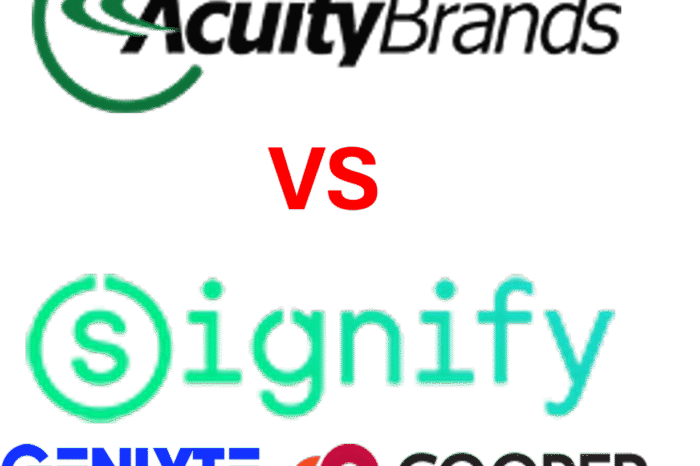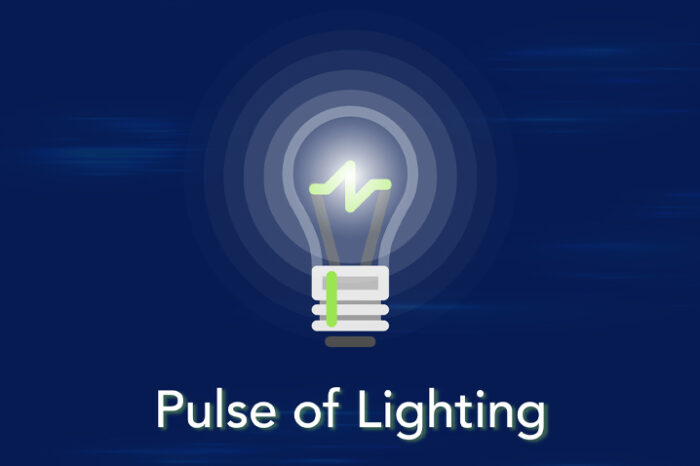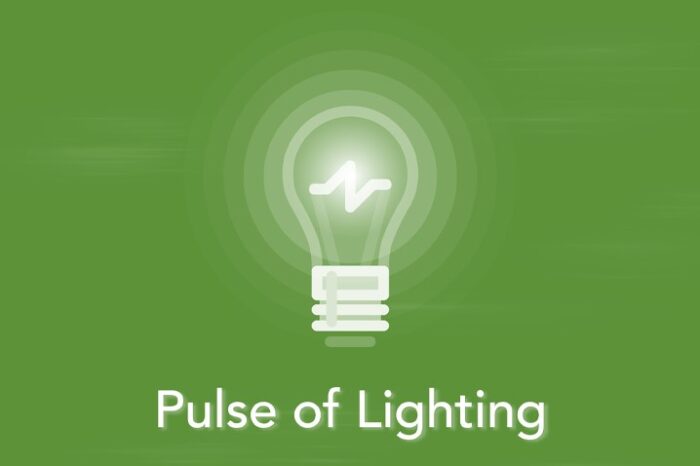Differing Paths to Lighting Success

Acuity quarterly report (their Q2 fiscal year)
- Overall “outstanding results”
- Net sales increased 26% to $787M! 12th quarter in a row for double-digit volume increase. This increase excluded Juno and Distech (recent acquisitions)
- Operating profit margin was up 250 basis points to 16.4% (overall, not necessarily, but could be, for electrical distribution channel). Overall gross profit margin is 43.5%, up 200 basis points vs last year.
- Growth enabled continued investment in line expansion, lighting controls portfolio, building automation and Internet of Thing solutions
- Reinforces value of “differentiated value-added solutions”
- LED sales grew 40% vs same period last year and now represents 55% of total new sales (which means a higher percentage of fixture sales)
- Now offer, including Juno, 1.8M skus and continue to launch new products
- Are we entering a new phase of LED lighting? Consider when Acuity says “now that LED is widely accepted, the attention of customers is focused on how they can best control and utilize this light source to optimize their visual environment, while realizing additional benefits including energy savings and the opportunity to have a smart connected platform to enable the Internet of Things.” (the question for electrical / lighting distributors is “are you prepared for this? Do your energy / lighting specialists understand this? Do your outside salespeople know enough to identify an opportunity? If not, these opportunities will go to other channels or direct or direct to the rep.)
- Lighting segment growth for lighting in 2016 is expected to be mid to upper single digits (which means distributors need to use this as a guideline, at a minimum to benchmark their lighting success.)
- Most of rep rationalization due to Juno is complete
- Acuity is generating revenue from its Tier 4 offering from business analytics and “other capabilities.” Question – how do distributors play in this? Do they get a residual if it was their customer? Do they have the opportunity to resell the service? Can they learn the functionality and offer it as their service? Or is this high margin, direct to Acuity, products that are directly sold to the end-user. Distributors should inquire.
- Acuity believes it is taking some market share but didn’t share, or perhaps doesn’t know, from whom. (Taking share in the lighting space is a challenging question given the two components – project and stock / flow goods. Taking share on the stock / flow goods is feasible. Regarding the project side of the business it is essentially out-selling the competition to get the specs, work the engineers / architects and then work with distribution on pricing to retain the business through the contractor and the contractor’s attempt to “value-engineer” projects themselves.)
- Strong growth in the utility segment (outdoor lighting). Just one of their 14 channels (perhaps at the NAED National (or maybe to their regional manager or the rep) distributors should seek to understand the 14 channels and what other competition they have in their local marketplace … and if there is pricing parity among comparable type channels.)
- Residential construction customer segment was up “very high single digits”
Last week wasn’t a good week on the stock market for Cree. Why? They are projecting that Q3 (for them) revenue would be $367M vs guidance of $400-430M. Wall Street can be so unforgiving.
Let’s delve into some of the analyst insights. Here’s observations from one analyst:
- All three company segments had declines, including the lighting division (and remember, Acuity was up 26%).
- Lighting Products division revenue is projected at $187M, down from an initial guidance of $235 … and down $37M from last year, so off 20% (again, Acuity was at $787M and up 26%)
- Would be interesting to know by product category and/or channel. Is it fixtures down? Or perhaps lamps? Is Cree losing share at Home Depot or through the electrical distribution channel? Are the “alternate channels” benefiting Cree or is it going to them because it is challenged with mainstream distribution? Are these alt-channels performing or are they distractions?
- Wonder what % of business is HD, ED, direct, alt channel?
- Lighting Products division revenue is projected at $187M, down from an initial guidance of $235 … and down $37M from last year, so off 20% (again, Acuity was at $787M and up 26%)
- “Cree appears to be dying a premature death as its superior technology has not been able to compete with the superior distribution of its competitors” (from speaking with many distributors over the past few years, we know many distributors would attest to this as they also question some Cree distribution moves. It has been our experience that superior technology, especially in the eyes of the manufacturer, never outperforms incumbent technology / manufacturers who still meet customer expectations and are easy to do business with for the distributor.)
- Rationale for decline:
- customer service disruptions due to change in ERP system (and they didn’t go to SAP. We know many manufacturers experience this when they make a conversion.)
- New product delays (it happens)
- Slower than forecast calendar Q1 (no, can’t provide an interpretation for this)
If these are the reasons, and the first two are plausible, and justify a 20% miss from projections, Cree should have an extensive backlog. Perhaps not equal to Acuity’s increase, but perhaps 50% of it? A question then becomes, as a distributor, what was your experience this past quarter with Cree?
In a story in the Triangle Business Journal,
- reportedly the order rate in March improved and Cree expects the new products to generate demand in their fiscal Q4
- Chuck Swoboda said “I feel cautiously optimistic that we’re moving in the right direction and “we’ve got to build sales momentum around them (new products).” (Somehow that tone doesn’t sound too confident.)
- Pricing strategy has not changed “significantly” but the company made a personnel change as its lighting leads, Norbert Hiller, was reassigned.
A tale of two companies? Differing paths to success (one dominant with the channel and a differentiated product strategy), the other with a diffused channel strategy and focused on, what it feels is, a superior technical platform? What are your thoughts on these two companies … and what is your view of Eaton Lighting, Hubbell Lighting and Philips Lighting?























